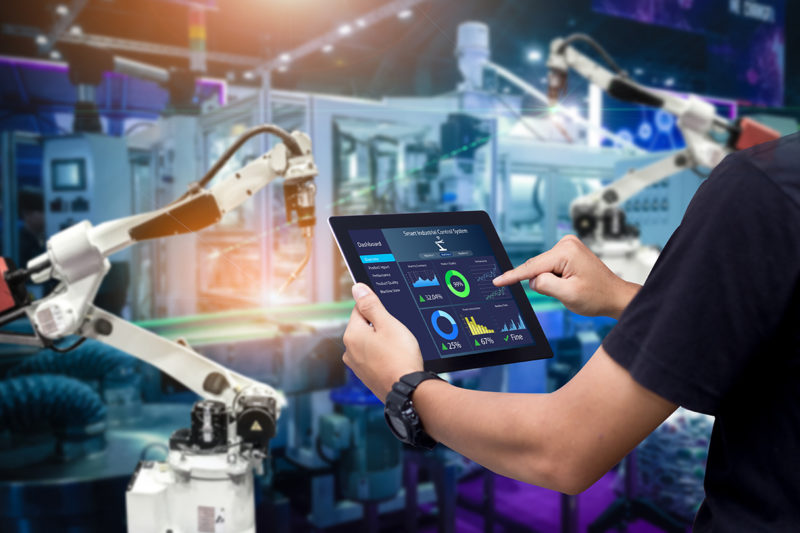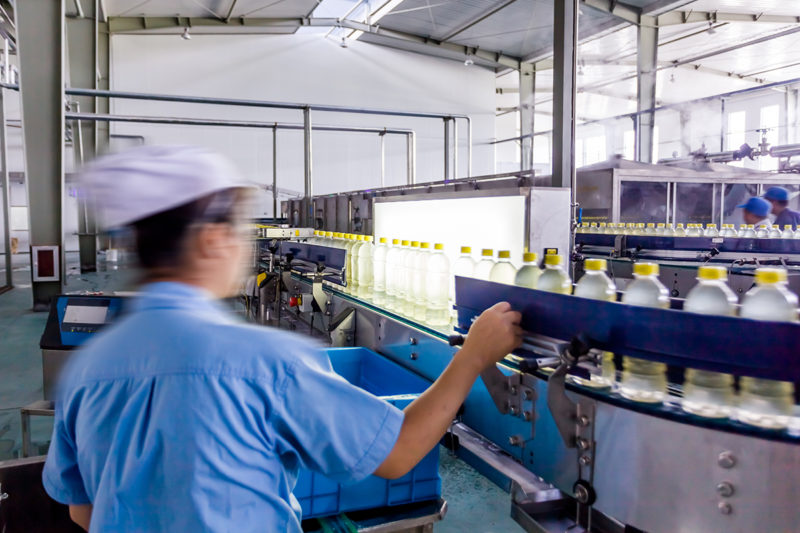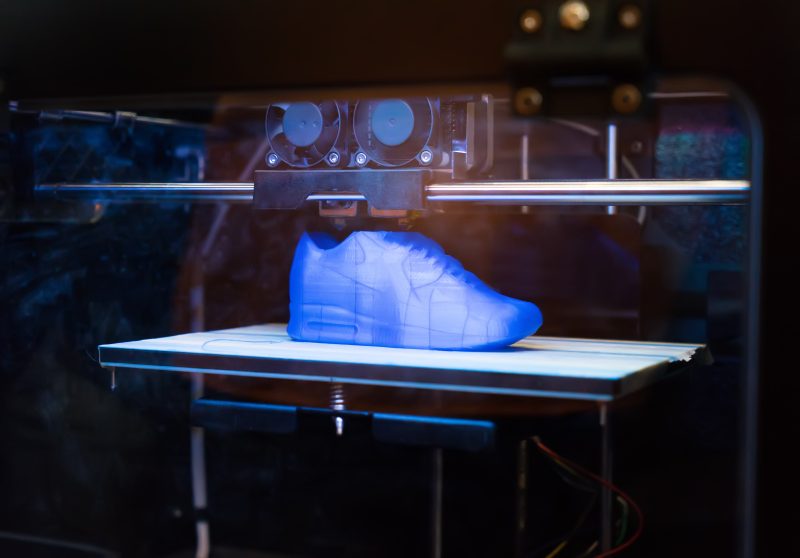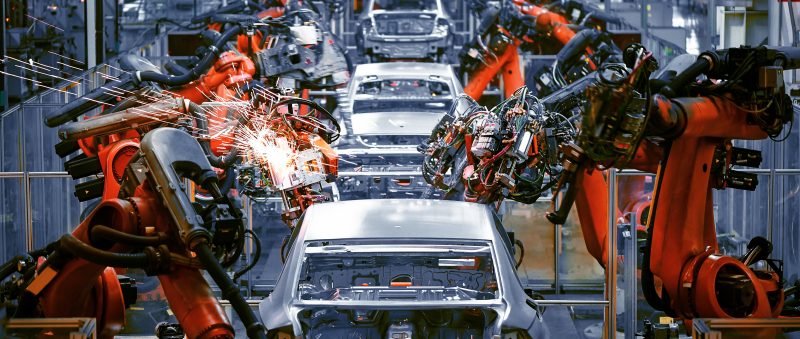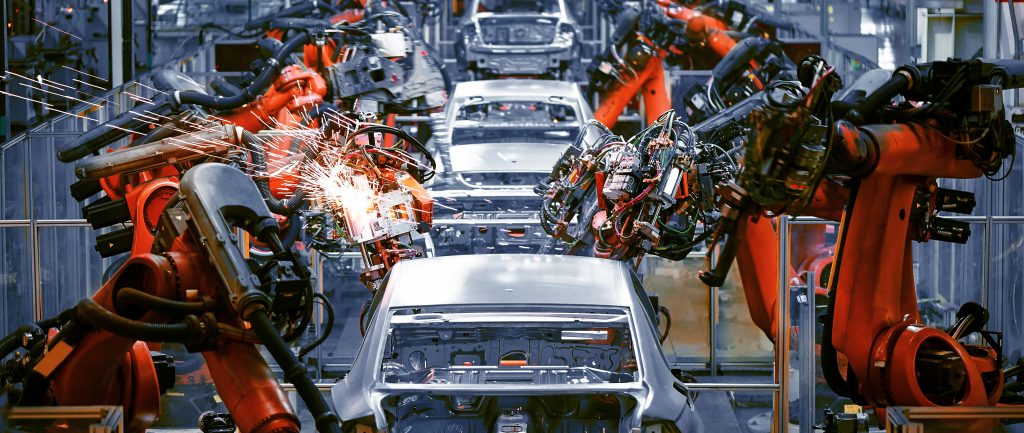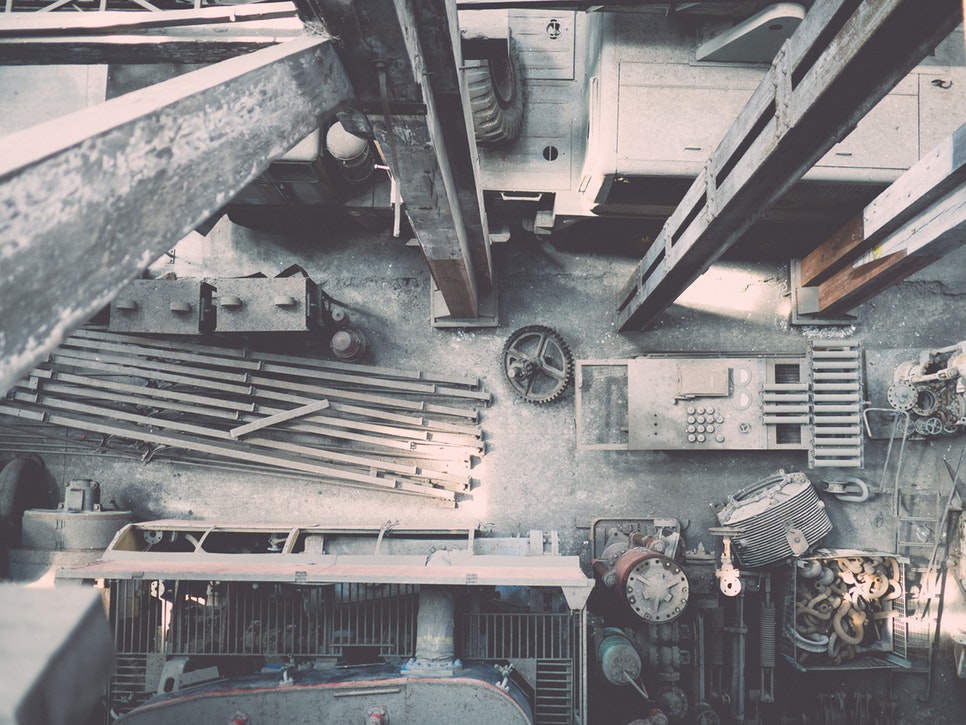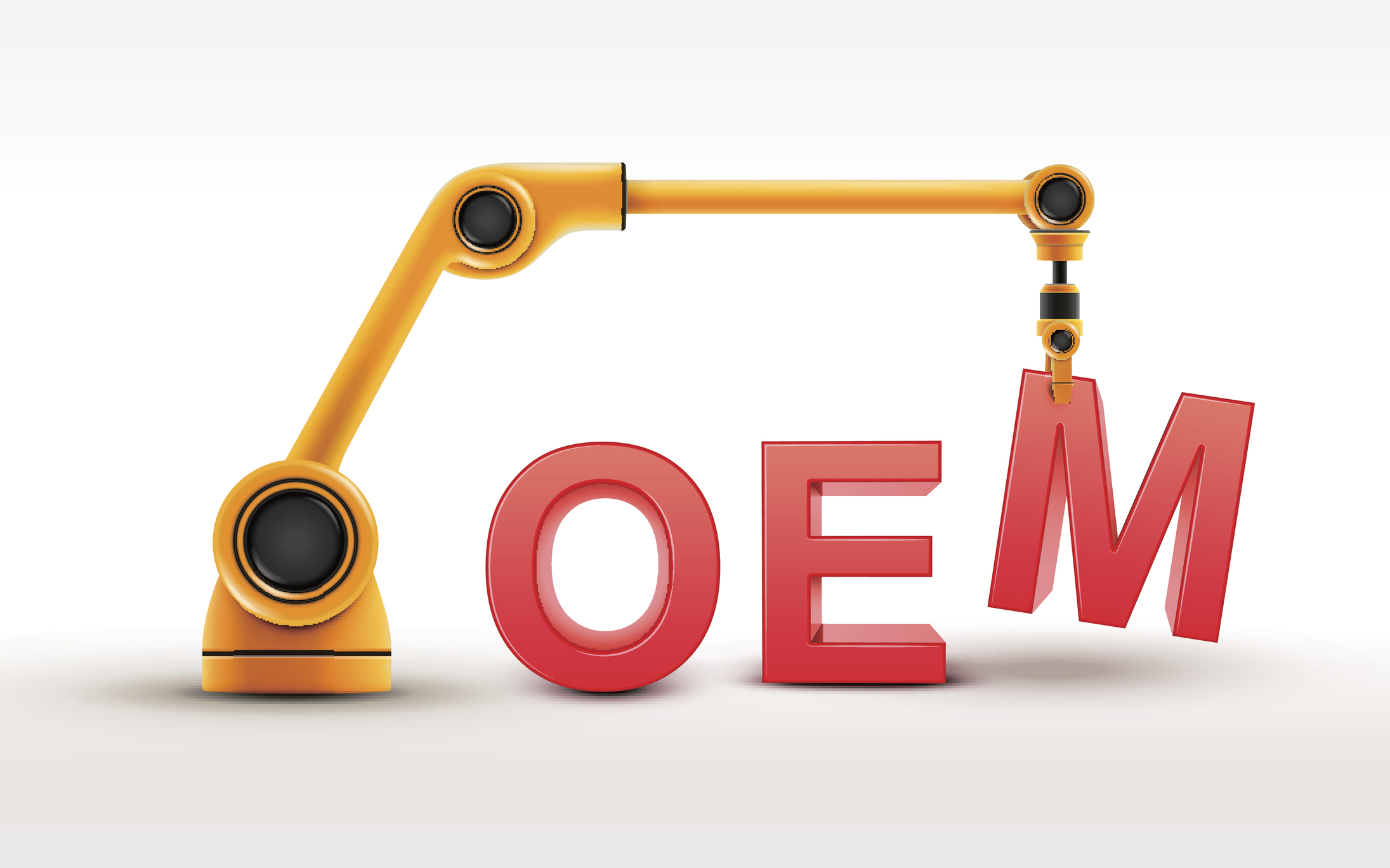Manufacturers are a restless bunch. We’re constantly looking for better ways to make things, ways that are faster and more efficient. Ways to make better products with less waste and fewer defects.
Enter Industry 4.0, the new wave of manufacturing. Industry 4.0 combines the digital and the physical, using huge amounts of historic and real-time data to allow better and more accurate production. Worldwide, 4.0 factories can provide full traceability of the entire manufacturing process. As you can imagine, this has the potential to minimize risk and eliminate waste.
Industry 4.0 is evolving as fast as digital technology allows it to. Let’s look at how it came to be, how it’s used in manufacturing and what you should know about it.
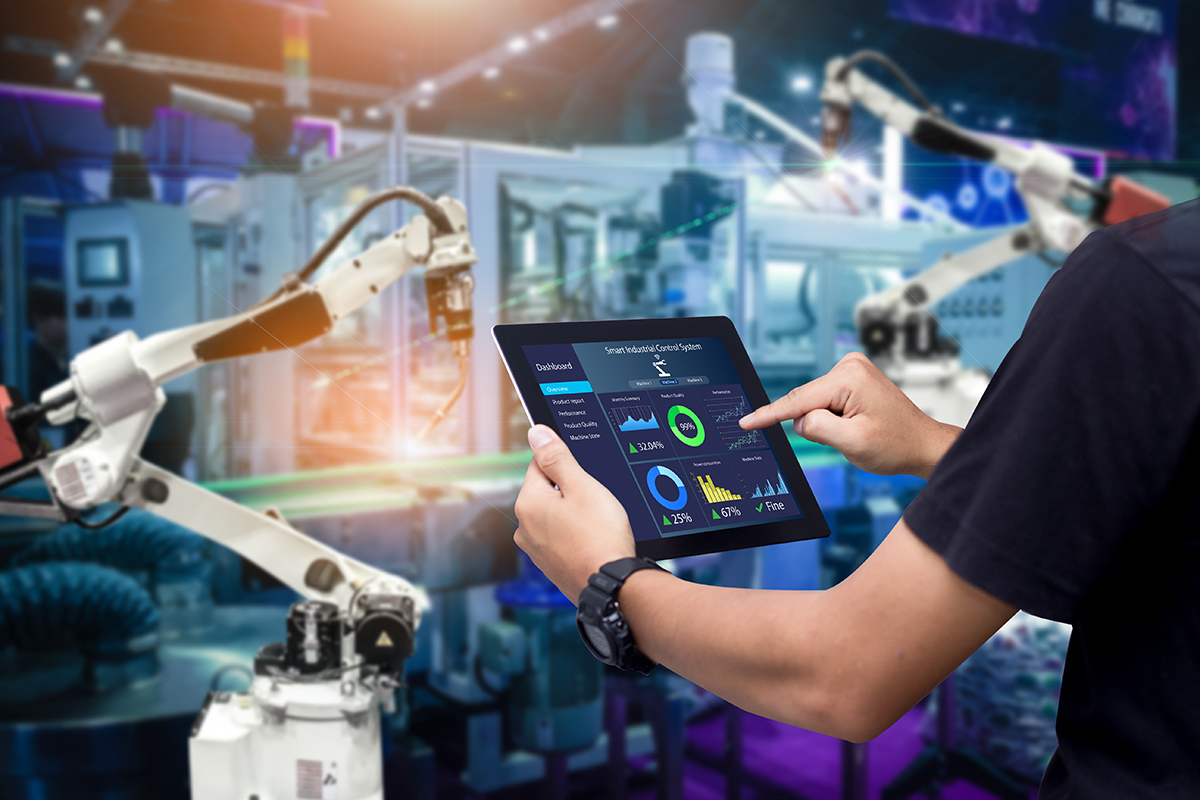
History of Industry 4.0
The First Industrial Revolution, which began around 1780, harnessed water and steam power to mechanize production. About 1870, the Second Industrial Revolution introduced assembly lines and mass production, with the eventual help of electrical energy. In the early 1950s, computers ushered in the Third Industrial Revolution with digital technology.
Often called the Fourth Industrial Revolution, Industry 4.0 was not the brainchild of an inventor or a big corporation. Instead, it began with a 2011 project of the German government to build on the computerization of the Third Industrial Revolution in order to fully digitize and optimize manufacturing. It did this with smart systems and smart machines fueled by data.
Factories are still coming on board with Industry 4.0, gradually investing in resources and technology such as:
- Robotics and automation – besides the famous Amazon warehouse robot, robotics also include collaborative robots. “Cobots” are designed to work alongside their human operators, who “teach” them what to do and in what order. Cobots then optimize the steps to improve outcomes. Automation is constantly improving as well, in every sector from the auto industry and plastics, to food and consumer goods.
- Additive manufacturing (AM) and 3D printing – depending on whose industry numbers you look at, the 3D printing market is expected to hit $35 billion by 2025, give or take a few billion.
- The Internet of Things – the IoT is the potentially giant network of computers, machines and systems that “talk” to each other through exchange of data over the Internet. One example of the IoT at work is the smart home, with appliances, HVAC systems and security systems all connected to each other and controlled remotely from your device. (Or your three-year-old’s voice commands.)
The Power of the Smart Factory
The power of Industry 4.0 lies in its ability to gather, process and analyze huge amounts of data. Data is how we make our decisions, how we mitigate risk. Analyzed and processed correctly, more data means more efficient factories with less waste and better production.
We mentioned smart systems and smart machines. In manufacturing, linking these together with the help of the Internet creates an Industrial Internet of Things. This IIoT informs the production process and can actually improve it in real time. It does this as it acts on insights from data gathered at every point in the manufacturing process.
A factory that is truly Industry 4.0, end to end, will allow continuous product development and process improvement that self-corrects and self-optimizes. This is the smart factory, a factory that can teach itself—and teach humans—how to be more productive and safer.
The US Smart Manufacturing Leadership Coalition—a national alliance of manufacturing organizations, research universities and government labs—has made some impressive estimates on the economic benefits of smart manufacturing:
- 25% reduction in factory safety incidents
- 25% improvement in energy efficiency
- 40% reduction in water use
- 10% improvement in overall operating efficiency
- 10% reduced time to market

How Industry 4.0 Benefits Your Product
As noted, Industry 4.0 is all about the data and data analytics, which allow full traceability of the entire manufacturing process. In the IIoT and on the factory floor, data is collected all along the chain of production.
For instance, in a manufacturing process, if there’s 20 steps in that process, you would have full traceability of every step. There would be a barcode placed on that component. As it’s going through the different steps in the process, sensors would allow you to actually go back and see how long it stayed in Process #12 through #15. You can see that it stopped in Process #5, and there was a potential issue in Process #7. It had to go through inspection at #7, but it still passed.
It’s extremely helpful to have that full traceability between each step, between each iteration. You can see that two years ago, a certain part was produced and it failed for surface delamination, or warping, or something else. You can start to see from the historic data that the warping was not an anomaly. Instead, it’s a problem that needs to be addressed. If it isn’t, you could be looking at 5 parts per million defect rate because of this one issue. You can see all this because of the traceability of the product, start to finish.
The Future for Industry 4.0
The future for Industry 4.0 is wide open. Besides continual optimization of factory operations and processes, you can expect to see:
- Optimized logistics and supply chains – if something like weather is disrupting the supply chain, connected systems can step in and make adjustments
- Autonomous equipment – for example, self-driving cranes and trucks in addition to automated factory machinery
- Improvements in automated assembly and additive manufacturing – technology might allow more 3D printed metal, perhaps even the ability to combine 3D printed metal and plastic
Industry 4.0 may even have the potential to “backshore” manufacturing, reversing the trend toward overseas manufacturing. The higher productivity of Industry 4.0 could encourage manufacturers to relocate operations back closer to the customer. Which could in turn save on shipping costs and help reduce the carbon footprint.
As you look ahead and think about increasing the volume of products you’re building, you may wonder whether factories in Europe or China are the answer. Wherever you go, make sure you’re looking at contract manufacturers that are embracing Industry 4.0. This will allow you to benefit from things like an automation process that eliminates having your product touched with human hands and damaged. You might also get a more accurate sales quote and shorter turnaround times from an Industry 4.0 manufacturer.
Industry 4.0 is the wave of the future. Since the future is already here, you should take advantage of it.
Manufacturing Mastered
Alotech provides contract manufacturing services efficiently and ethically to small business. In addition to remanufacturing, prototyping, and product development services, we make creative investments in companies. We strive for success so you can too: 919-774-1297

